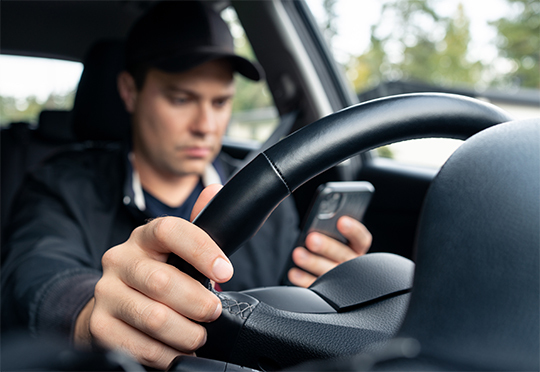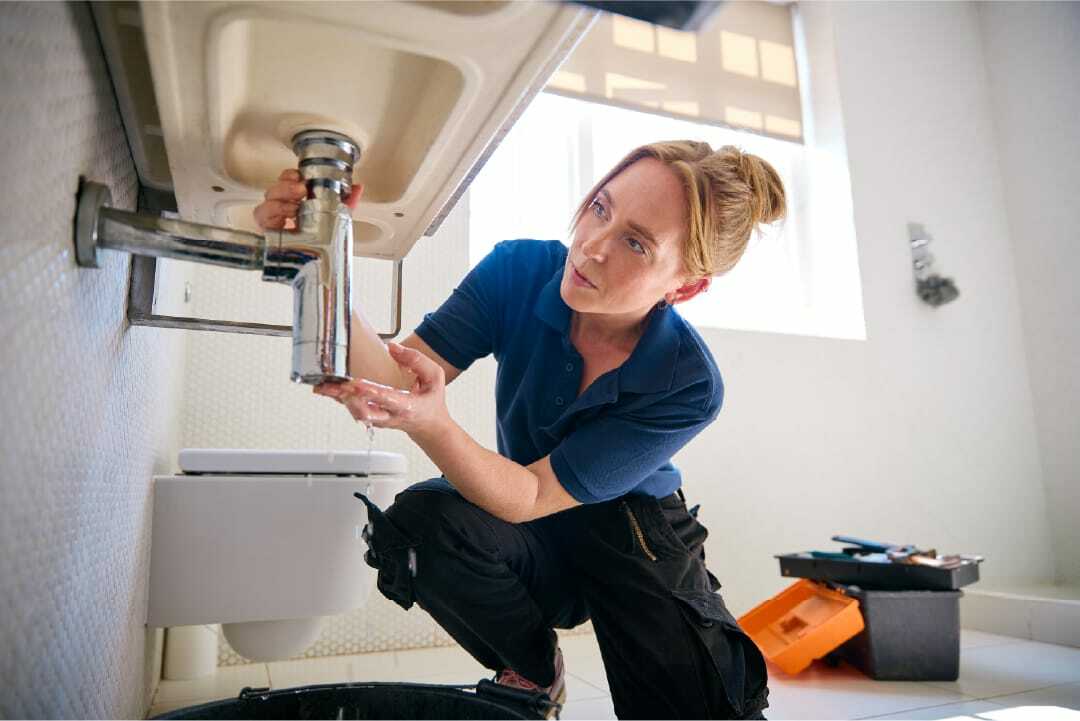
The Dangers of Distracted Driving for Fleets
Commercial fleets face plenty of obstacles beyond their control; variables like inclement weather, afternoon traffic and untimely road construction (sometimes all at once) will pretty much always be part of the job no matter how carefully a driver plans their route.
But distracted driving incidents — a danger trending sharply in the wrong direction — stand out as a particular frustration for drivers and fleets alike. To quote the NHTSA, a five-second distraction at 55 mph is the equivalent of driving the length of an entire football field with your eyes closed, which is likely why roughly 70% of drivers now consider texting and driving “equally dangerous” to drunk driving.
Fortunately, there are effective ways for fleets to combat distracted driving, including tools and systems (yes we’ll be touching on telematics here shortly) designed to encourage the habits required to keep commercial vehicles safe, and to aid drivers in staying alert and attentive over tens of thousands of miles.
But first, what constitutes distracted driving (besides texting)?
Distracted driving stems from habits seemingly within a driver’s control, but saying “hey, let’s not text and drive” is about as strategic as a manager telling his ballclub to simply stop losing games. Any chance of success requires some measure of coaching, and (ideally) a plan to implement the kinds of changes that lead to better outcomes.
Also, it’s worth noting that while phone usage deserves a fair share of the blame here, a more complete list driver distractions includes the following:
- In-cab technology misuse like fiddling with other in-cab devices (GPS and the like) for job updates or route changes.
- Eating and drinking while the vehicle is in motion.
- Personal grooming like adjusting hair, shaving, teeth-brushing or applying makeup.
- Reaching for objects while driving, i.e. stretching to grab items from the passenger seat, dashboard or floor.
- Daydreaming or “lost in thought” due to brain fog or fatigue.
- Engaging with passengers by turning to talk, gesturing, or holding conversations that take the focus off the road.
- External distractions like roadside incidents, billboards, or scenery.
You might notice from the list above that most distractions aren’t born from a brazen disregard for safety. Instead, they’re generally reactions to unexpected happenstance — like something falling to the floor of the cab at the precise moment someone slams on their brakes.
Considering the staggering number of miles driven by commercial truckers each year, it’s understandable why even focused drivers might find themselves momentarily distracted. The trick is to prepare against those circumstances ahead of time by understanding the potential consequences of a seemingly innocuous meal-on-the-go or quick text to a friend.
How distracted driving harms fleets
Virtually nobody is “pro”-distracted driving, but it’s worth considering just how far the impact of even the smallest lapse in a driver’s focus can go:
People can get hurt. Distracted driving can directly cause severe injuries or loss of life. Beyond the tragedy of lives cut short or permanently altered, these events carry lasting emotional and legal ramifications for drivers, victims, and companies alike.
Business suffers. The cost of a major accident involving injury can easily surpass hundreds of thousands of dollars; fatal crashes often run into the millions once medical expenses, litigation, and settlements are factored in (there’s a reason most available data on distracted driving is found on personal injury sites).
Operations become a mess. For shippers already managing tight margins and strict delivery windows, one incident can produce a string of missed deadlines and dissatisfied clients (deliveries are delayed, routes are rescheduled, customers begin questioning the reliability of your fleet and so on).
Insurance premiums skyrocket. A single preventable accident can cause premiums to spike — and multiple incidents can make coverage harder to secure altogether.
Brand image takes a beating. A reputation for unsafe driving harms customer trust and negatively influences future contracts, partnerships, and growth opportunities. In other words, people notice.
Improving your fleet’s focus on the road
So, we’ve established distracted driving = bad; now what?
The solution for commercial fleets is two-fold: first, establish and perpetuate a culture that makes it clear safety is prioritized above all else (including on-time delivery!) and second, invest in tools that keep everyone involved in fleet logistics accountable to those standards.
Together, industry-specific telematics tools and a set of immovable safety standards allow fleets to identify risky behaviors and intervene before accidents occur.
When it comes to specific features designed to improve safe driving habits, we recommend looking for tools that offer the following:
- Real-time alerts – In-cab notifications that correct unsafe behavior in the moment.
- Driver scorecards – Transparent performance tracking that helps drivers and managers monitor progress over time.
- Coaching tools – Notes, session tracking, and video evidence that support constructive, trend-based coaching sessions.
- Easy access to company policies – Transparency eliminates any ambiguity concerning what’s allowed behind the wheel.
- Some way to recognize (and incentivize) good driving – Good safety tools provide insight into whose habits are steadily improving or are consistently excellent.
- Mobile accessibility and easy integration – Tools that fit seamlessly with existing systems (GPS, dispatch, fuel cards) allow managers to act quickly without any extra administrative burden.
Final word
No driver sets out to cause a distracted driving incident, but the pressures involved in commercial driving continue to create an environment where these incidents pose a significant risk.
By pairing safety tools with a proactive culture of safe driving — one that includes regular coaching and a working knowledge of how to get the most out of your safety tech — fleets can reduce their number of preventable accidents, protect drivers and preserve their bottom line.
Contact our team here for more on preventing costly distractions and accidents with Linxup’s GPS tracking and dash cam solutions.



